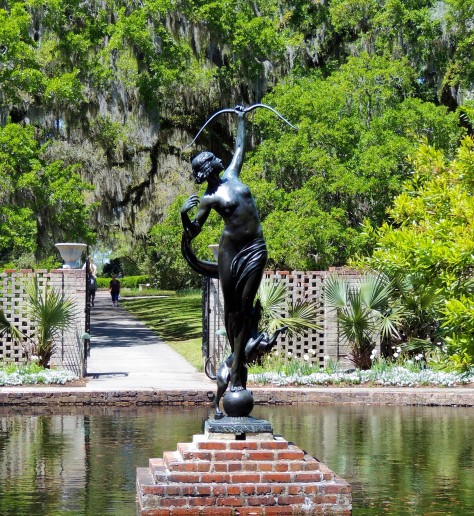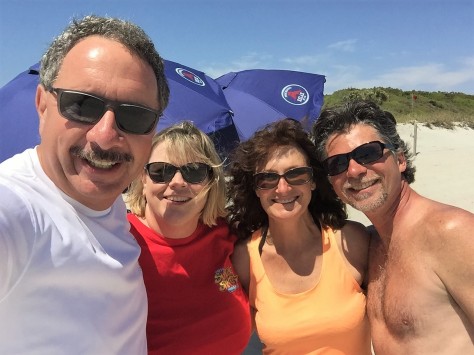June 25 – July 1, 2018 – Adirondack Park, New York
One of our first vacations as a married couple was a 1985 trip to Lake Placid and the Adirondacks in upstate New York. This was before we started our series of trips to Maine, which began a year later. Since it had been so long, one of our goals this year was to return to the Adirondack region to reacquaint ourselves with the area.
Adirondack Park covers 9,375 square miles, about 1/5 of the entire state of New York. It was created in the late 1800’s to keep the wilderness from being over developed. The preserve includes over 100 towns, making it different than a traditional state park. It is overseen by the Adirondack Park Agency, which puts limits on what can and can’t be built within the park boundaries. The state’s highest peak, Mt. Marcy, is found here along with a number of other tall mountains.
One of the most popular communities is Lake Placid. Home to both the 1932 and 1980 Winter Olympic Games, this village has established itself as a training mecca for Olympic athletes. It is also a tourist destination, as the outdoor recreational possibilities seem endless.

This is the 1932 Olympic rink. Not a lot of room for spectators! We were enjoying watching the workers prepare for an upcoming figure skating event. That brought back a lot of memories for me, as I worked as a Zamboni driver while I was in college.

Next door is the 1980 rink, now known as Herb Brooks Arena. This is where the US hockey team beat the Russians, then went on to win the gold medal by defeating Finland. As you enter the rink, the sign above the door states “Home of the Miracle on Ice – Site of the Greatest Sporting Event of the 20th Century”. Some may debate that last part, but it certainly was right up there. A personal side story to that: The night the US team beat the Russians, our Western Michigan University hockey team was also hosting a game. My friend and fellow Zamboni driver, Mike, and myself were watching the college game from the stands. You have to remember, this was during the Cold War and although hopes were high, no one thought the US stood much of a chance against the Russian team. Our pro shop manager came up in the stands to tell the public address announcer that the US team had won, but stopped to tell us first. After a little quick thinking, we instead returned to the pro shop and grabbed a piece of poster board and wrote “FINAL – USA 4, USSR 3” on it. We rolled it up, grabbed some hockey tape and headed to the Zamboni. Our lead driver, John, didn’t see us sneak into the Zamboni room and tape it on the front of the machine. After the period ended he backed onto the ice and started circling the rink, and the place went absolutely wild! It was like a wave as the crowd saw the sign as he went around and rose to their feet, roaring far louder than they had for Western scoring a goal. The look on his face was priceless, as he never had been cheered for doing his job. As he stopped by the guy pulling the net pins from the ice, he was told to look at the front of the machine. He climbed down, looked at the front and thrust both arms in the air. The crowd lost it. 🙂

Attached to the back of the 1980 Olympic arena is a third rink. This is where the curling events took place. It was interesting to see that it wasn’t a dedicated facility, in that it also could be used for hockey and figure skating. It sure would be fun to be up in that Zamboni driver’s seat again!
Inside the arena complex, we toured the Lake Placid Olympic Museum.

We found this collection of Olympic torches to be interesting…

…as were the uniforms worn through the years by the US athletes at the opening and closing ceremonies. There were other items that had to do mostly with the two Olympics that took place in Lake Placid.

Across the street from the arena complex is the outdoor speed skating oval. This is where Eric Heiden won his five gold medals in 1980. We were surprised that it was outdoors, as the newer Olympic venues are all inside. What a view!
Just down the road in the town of North Elba is the Ski Jumping Complex.

The 90 and 120 meter hills are easily seen from most places in the Lake Placid area.

This is the view from the deck of the new Intervale Lodge at the base of the jumps. This entire complex is being constantly updated and is used year round.

In the summer months, jumpers use an artificial surface to ski on. In the photo above, workers can be seen attaching the plastic material to the hill, similar to the method shingles are attached to a roof.
Immediately to the left of the ski jumps is the summer freestyle training facility.

Here is a young man headed down the hill now!

Look at that….a back flip! But where is he going to land in the summer, you ask???

Why that would be into a 750,000 gallon pool! Bet that feels good on a hot day. 🙂

We watched from the stands for quite awhile as these daredevils twisted and flipped off the takeoff ramps into the water. For all we know, we could have been looking at future Olympians. It was very entertaining, to say the least.
Just across the road from the jumping complex is the place where the opening ceremonies for the 1980 Games was held. It is now the home of the Lake Placid Horse Show. Seeing that there appeared to be a big event going on, we decided to check it out!

What a treat to be able to see the horses and rider as they navigated the series of jumps.

It was a thrill to see them airborne! Pretty remarkable to see an animal as big as this leap that far.
While we walked the grounds, we noticed this:

There’s the cauldron from the 1980 Winter Olympics! It looked so much bigger on TV. 🙂
Another place we visited in the area was High Falls Gorge. This 22 acre privately-owned attraction deserves a mention not only for its beauty, but also for what can happen when a natural feature ends up in private hands.

Here is upper part of the cataract on the Au Sable River that appears in it’s pristine state.

To reach the lower portion, the company has built ramps, platforms and bridges within the gorge. To us, this tarnished the beauty of the falls.

And with it being private, the admission fee is right up there. It seemed a bit odd that this was in the middle of the Adirondack State Preserve, but it’s been a private attraction since the 1890’s. Nature’s creations deserve better stewardship, in our opinion. While the falls themselves were beautiful, we felt that a state or national agency would have provided a more natural visitor experience. In a much broader sense, this is why we feel that our public lands should not be allowed to fall into private hands. It cost us $11.95 each, plus 8% New York state sales tax for a total of $25.81. In comparison, our annual National Park Pass, which covers over 400 sites, is a bargain at $80.00.
Another thing we found in the area was the John Brown Farm. You may recall us talking about him in our post from Harpers Ferry, where he led a raid that resulted in his being executed. At the time we noticed his farm was in North Elba, NY, but we had no idea where that actually was.

Well, standing next to his grave, the back of the 120 meter ski jump is easily seen. Now we know where North Elba is. 🙂

John Brown, who used violence to further the efforts to abolish slavery, is a controversial figure in US history. Some travel here each year to show their respects on his birthday, others feel he was a bit of a zealot. The building behind the statue is his farmhouse. The inscription under the figures’ feet says, “His soul goes marching on”. That is a reference to the Civil War era song, John Brown’s Body, which was rewritten at a later date to become The Battle Hymn of the Republic. In the former version, the lyrics start out “John Brown’s body lies a moulderin’ in the grave.”

Well, here is that grave he is a moulderin’ in, along with several of his followers who fought with him at Harpers Ferry. That event is seen as one of the sparks that led to the Civil War.

Behind the house and grave is the barn.

The lower level houses a nice display dedicated to the story of John Brown as an abolitionist.

The upper level speaks to the area’s role in the Underground Railroad. Gerrit Smith, a wealthy landowner and politician who was a leader in the abolitionist movement, gave away 120,000 acres of North Elba land in 50 acre parcels to black families from the south. Being a property owner gave them a right to vote, as well as a means to becoming self-sufficient. John Brown had purchased some of that acreage to help teach the former slaves how to work the land. Unfortunately the area conditions weren’t conducive to farming, and the experiment failed. We found the entire farm to be fascinating, and it really tied in well with our visit to Harpers Ferry.
The other place we visited in the area was the top of Whiteface Mountain.

Our last trip here was in a 1981 Chevette. I remember that well, as we had to turn the air conditioning off to make it up the hill. 🙂 This is a great place to view Lake Placid from.
Leaving Lake Placid, we spent a few days in the Lake George area, at the southern end of Adirondack Park. The weather turned hot, so we limited our activities to taking care of errands and celebrating my 60th birthday! Our friends and fellow RV-Dreamers, Bonnie and Fred, have their home base in the area so the four of us met for a wonderful steak dinner at the Log Jam Restaurant. We hadn’t seen them since March of 2017, so we had a lot of catching up to do. As a result, we completely forgot to take photos. They are going to spend the winter just down the road from us in Melbourne Beach, so I’m sure we will get some photos then. 🙂
That wraps up our time in the Adirondacks! Next up, we move west through New York State to visit some of my childhood idols. Be sure to check back here to see what that is all about. Until then, safe and happy travels to all!












































